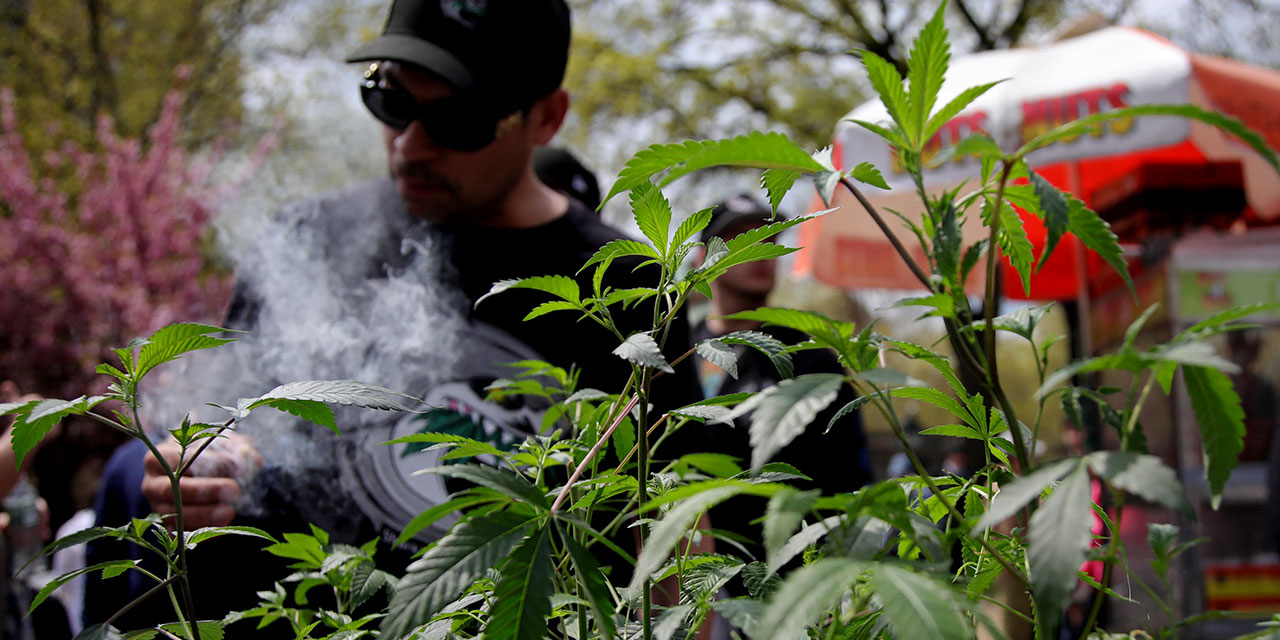
At a certain level, the question is straightforward: Should policymakers seek to make it more, or less, likely that Americans increase their consumption of marijuana? The White House may be on the verge of giving the wrong answer.
According to the Wall Street Journal, President Trump told attendees at a political fundraiser that he is considering reclassifying marijuana from Schedule I on the federal list of controlled substances to the less-dangerous Schedule III category. The move would make pot equivalent to anabolic steroids, testosterone, or ketamine—all of which continue to see rising usage, despite associated risks.
Finally, a reason to check your email.
Sign up for our free newsletter today.
The Trump administration should resist the urge to reschedule. Marijuana’s benefits remain vastly oversold and its harms understated—particularly when it comes to young men’s job, marriage, and family-formation prospects.
The initial wave of pot legalization at state and city levels was premised on the idea that enforcement was counterproductive, and that the drug was at worst mostly harmless and at best helpful to some users. Who could be against the chronically ill finding unorthodox pain relief, consenting adults occasionally taking the edge off, or Willie Nelson and Snoop Dogg collaborating?
But what began as a grand social experiment of state legalization quickly evolved into mandated acceptance of public marijuana consumption. It’s rare to walk the streets of any major U.S. city today without catching a whiff—or more—of pot’s sickly-sweet aroma.
While the dynamics of urban life were altered for the worse, the underlying economics of the pot industry haven’t really changed. There simply isn’t much money in being able to buy and use marijuana from standalone weed shops. To make the big bucks, you need legal structures, scale, and maybe even subsidies.
That’s why full legalization is attractive. Investors are already contemplating the profits that could be made from chains, brands, and retail distribution. Just think of the shareholder returns, to say nothing of the tax revenues, to be had from making marijuana distribution professional, slick, and integrated into the full suite of “wellness” and “therapy” products.
Rescheduling marijuana would open the door for Big Weed to go mainstream. Businesses now operating in a legal grey area could licitly deduct business expenses, access capital, and advertise openly. National brands could arise, running spots during football games, offering intro deals via popular podcasters, and promising to deliver high-quality weed straight to your door—use promo code CHEECH.
Cultivating a massive new industry dedicated to getting more Americans using marijuana more frequently would tear at the nation’s social and economic fabric. Already, weed’s impact on the labor force is raising concerns: a decade after the first states legalized recreational pot, positive tests for marijuana following on-the-job accidents tripled, according to the Wall Street Journal.
While most regular marijuana users avoid dependency, many do not. One in five lifetime marijuana users exhibit some sign of cannabis use disorder. For young people, especially, the drug is associated with lower educational achievement, lower levels of earnings and connection to work, and reduced likelihood to marry.
Is it hard to prove definitively that the causal arrow runs from pot to rot? Of course. A young man without positive role models, a sporadic job, and few romantic connections might certainly be more likely to use weed. But even without such iron-clad statistical proof, our declining marriage and fertility rates should make us deeply cautious about the signals we’re sending to young men. There are plenty of reasons to believe that young men whose social lives revolve around getting high are less marriageable than we would like.
Widespread social acceptance of marijuana for adults also inevitably means that more kids and teens get exposed, either accidentally or intentionally. According to the New York Times, cannabis-related incidents reported to poison-control centers have increased over 23 times since 2009, and three-quarters of the cases reported last year involved children or teens.
In Philadelphia, a physician at Temple University Hospital told reporters cannabis poisonings involving children have become “almost a daily occurrence.” A pediatrician in Charlotte, North Carolina, recounted seeing “floridly psychotic 2-year-olds” due to accidentally consuming someone’s cannabis-infused gummies.
If you instinctively recoil at the phrase “floridly psychotic 2-year-olds,” you might worry about the long-term damage done to young people inadvertently caught up in their relatives’ drug habits. You also might consider stronger regulations around the dissemination of fruity, colorful, and otherwise child-friendly ways of consuming cannabis, rather than changing the rules to make it even easier for companies to innovate around making their packaging and products more eye-catching. (The industry, of course, vigorously opposes such proposals.)
Market forces are powerful, driving costs down through competition and making products more appealing and harder to resist. Before making it easier for weed to go mainstream, the White House should seriously consider the downstream impact it would have on employment and marriage outcomes, particularly for young men without college degrees.
According to the best statistics we have, approximately one in four Americans used cannabis in the last year. Should policymakers take steps that would make that fraction rise? A candid assessment of the state of our cities and the health of our young people says the answer should be “no.”
Photo by LEONARDO MUNOZ/AFP via Getty Images
City Journal is a publication of the Manhattan Institute for Policy Research (MI), a leading free-market think tank. Are you interested in supporting the magazine? As a 501(c)(3) nonprofit, donations in support of MI and City Journal are fully tax-deductible as provided by law (EIN #13-2912529).
Source link

















